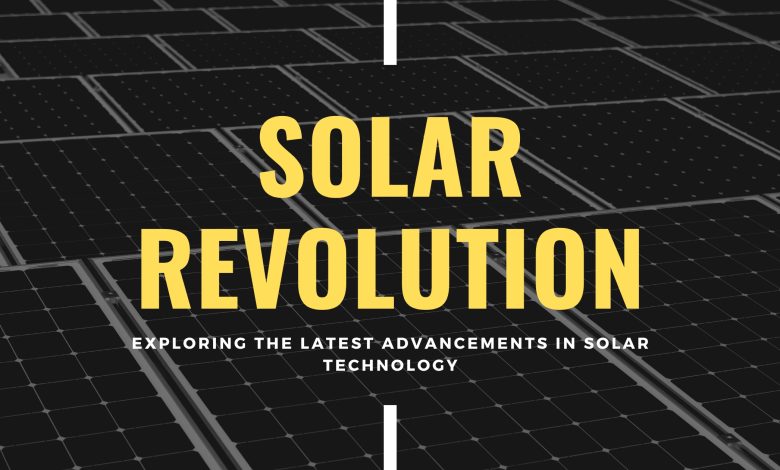Solar Technology

The Solar Revolution: Exploring the Latest Advancements in Solar Technology
In an era marked by rapid technological advancement and an urgent need to combat climate change, the solar industry is shining brighter than ever. Solar technology once considered a niche alternative, has evolved into a powerhouse of innovation, driving sustainable energy solutions across the globe. From breakthroughs in efficiency to novel applications, let’s delve into the latest trends and advancements that are propelling solar power into a new era of potential.
**1. Efficiency Breakthroughs: Pushing the Limits of Solar Conversion
One of the most remarkable aspects of the latest solar technology is the substantial increase in efficiency. Traditional solar panels have come a long way since their inception, with new materials and designs paving the way for higher energy conversion rates. Perovskite solar cells, for instance, have emerged as a game-changer. These thin, flexible cells not only offer improved efficiency but also boast the potential for low-cost mass production. Researchers are tirelessly working to enhance the stability and durability of perovskite cells, bringing us closer to a new era of highly efficient solar energy.
2. Bifacial Solar Panels: Harnessing Sunlight from All Angles
Bifacial solar panels have revolutionized the way we think about solar collection. Unlike traditional panels that only capture sunlight from one side, bifacial panels absorb energy from both sides, making them incredibly efficient in various environments. These panels can harvest reflected and diffused sunlight, effectively increasing their overall output. This innovation opens up opportunities for installations in spaces that were previously deemed unsuitable for solar generation, such as shaded areas or even vertical surfaces.
3. Smart Solar Solutions: Merging Technology and Energy
The integration of solar technology with digital innovation has given rise to smart solar solutions. These systems utilize advanced monitoring, control, and optimization techniques to maximize energy generation and consumption. Smart solar solutions enable real-time tracking of energy production and consumption, allowing homeowners and businesses to make informed decisions about their energy usage. Furthermore, the Internet of Things (IoT) has enabled the development of solar-powered devices and sensors, extending the reach of solar technology beyond energy production.
4. Solar Power Storage: Capturing the Sun for a Rainy Day
Solar power storage has been a longstanding challenge in the industry, but recent advancements have brought us closer to reliable and efficient solutions. Lithium-ion batteries, well-known for their use in electric vehicles, are being adapted for solar energy storage. These batteries enable homeowners and businesses to store excess solar energy during the day and use it during peak demand hours or at night. Additionally, emerging technologies like flow batteries and solid-state batteries hold promise for further revolutionizing solar energy storage.
5. Solar in Space: Beaming Energy from Above
The concept of harnessing solar energy in space and beaming it to Earth might sound like science fiction, but it’s becoming a reality. Space-based solar power involves capturing sunlight in space using large arrays of solar panels and transmitting the energy to Earth using microwaves or lasers. This technology has the potential to provide a constant and abundant supply of clean energy, unaffected by weather conditions or geographic limitations. While still in the experimental phase, space-based solar power represents a visionary leap toward addressing our planet’s energy needs.
6. Solar Innovations for Sustainability: From Roads to Textiles
Solar technology is no longer confined to traditional panels on rooftops. Innovators are exploring novel applications, incorporating solar cells into everyday items. Solar roadways, for instance, embed solar panels into roads, sidewalks, and parking lots, converting sunlight into electricity while providing durable and safe surfaces. Solar textiles, on the other hand, integrate solar cells into fabrics, enabling the creation of wearable technology that powers devices on the go.
Conclusion: A Bright Future Ahead
As the sun continues to illuminate our world, so does the boundless potential of solar technology. The latest advancements, from increased efficiency to imaginative applications, are transforming the energy landscape and shaping a more sustainable future. With each breakthrough, we inch closer to realizing the full potential of solar power, paving the way for a cleaner, greener, and more energy-abundant world. As we celebrate the remarkable achievements of the present, it’s clear that the solar revolution is far from over, and the best is yet to come.
